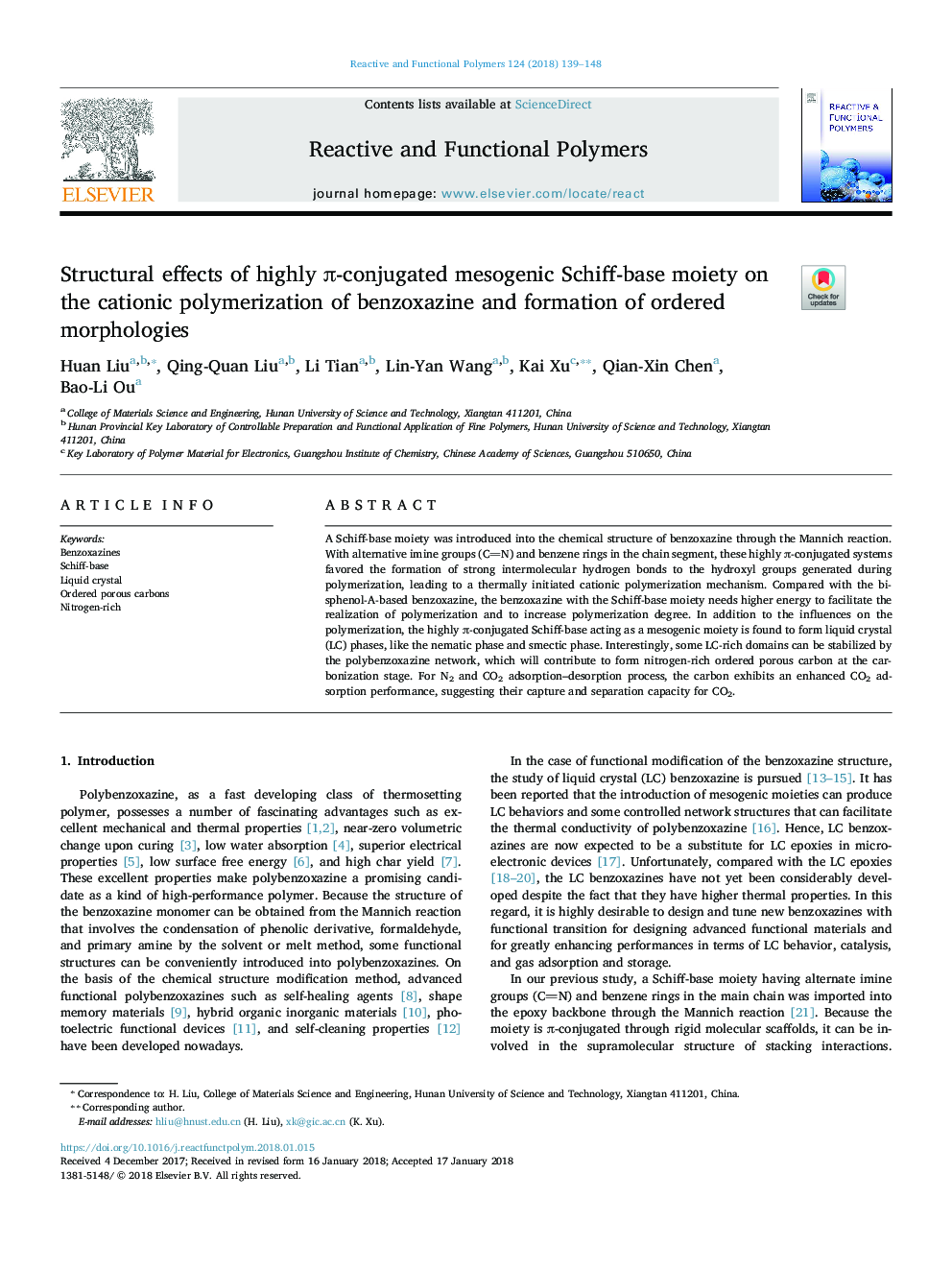| Article ID | Journal | Published Year | Pages | File Type |
|---|---|---|---|---|
| 7826400 | Reactive and Functional Polymers | 2018 | 10 Pages |
Abstract
A Schiff-base moiety was introduced into the chemical structure of benzoxazine through the Mannich reaction. With alternative imine groups (CN) and benzene rings in the chain segment, these highly Ï-conjugated systems favored the formation of strong intermolecular hydrogen bonds to the hydroxyl groups generated during polymerization, leading to a thermally initiated cationic polymerization mechanism. Compared with the bisphenol-A-based benzoxazine, the benzoxazine with the Schiff-base moiety needs higher energy to facilitate the realization of polymerization and to increase polymerization degree. In addition to the influences on the polymerization, the highly Ï-conjugated Schiff-base acting as a mesogenic moiety is found to form liquid crystal (LC) phases, like the nematic phase and smectic phase. Interestingly, some LC-rich domains can be stabilized by the polybenzoxazine network, which will contribute to form nitrogen-rich ordered porous carbon at the carbonization stage. For N2 and CO2 adsorption-desorption process, the carbon exhibits an enhanced CO2 adsorption performance, suggesting their capture and separation capacity for CO2.
Related Topics
Physical Sciences and Engineering
Chemistry
Organic Chemistry
Authors
Huan Liu, Qing-Quan Liu, Li Tian, Lin-Yan Wang, Kai Xu, Qian-Xin Chen, Bao-Li Ou,
